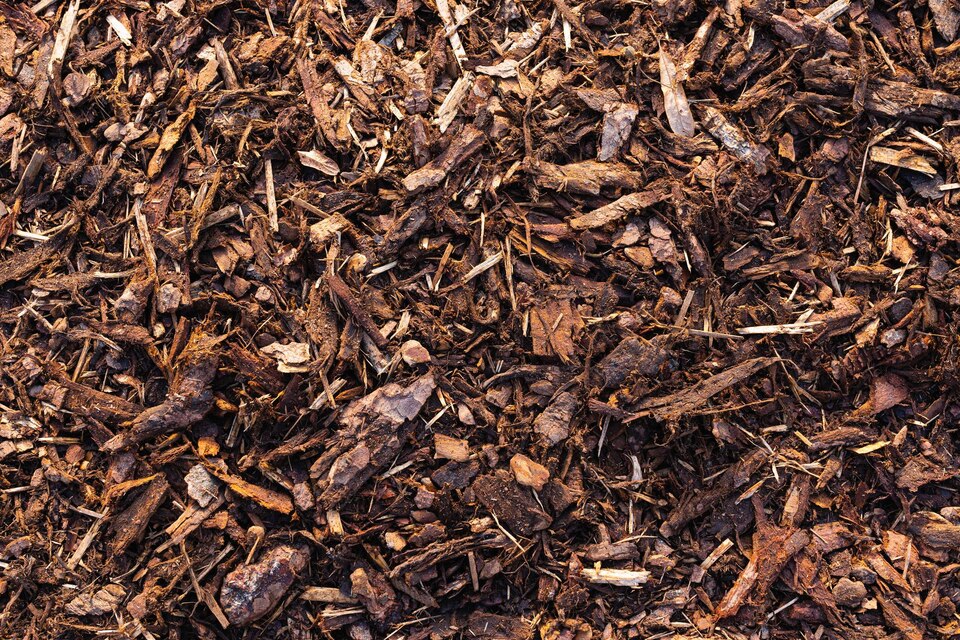Bark mulch is a popular choice for garden beds in Shoreline because of its ability to suppress weeds, retain moisture, and give outdoor spaces a cleaner look. But if it’s not applied correctly, those benefits don’t last long. Many homeowners are surprised to find that poor application can cause more harm than good—damaging plants, encouraging pests, and wasting time and resources.
From using the wrong type of mulch to placing it too close to plant stems, there are several common mistakes that can impact how well bark mulch performs. Shoreline’s climate, with wet winters and dry summers, makes it even more important to apply mulch the right way. This article focuses on the most frequent application errors and how to avoid them so your garden beds stay healthy and tidy all season long.
Choosing the Wrong Type of Bark Mulch
Not all bark mulch works the same. Some break down quickly, others last longer. Some are better for moisture control, and others look better around decorative beds. One of the most common mistakes Shoreline gardeners make is picking a mulch type just based on cost or looks without thinking about what the garden actually needs.
Here are a few popular bark mulch types and when each works best:
– Hemlock or fir bark: Typically more decorative, great for flower beds and visible garden spaces. Softer texture, decomposes faster.
– Cedar mulch: Slower to break down and naturally repels some insects. Works well around shrubs and trees.
– Shredded bark mulch: Holds together better on slopes and windy spots. Good for high-traffic or challenging areas.
The right choice depends on more than appearance. For example, using fine bark mulch in a low-lying area with heavy rainfall could lead to poor drainage and soggy roots. On the other hand, large bark nuggets might not be the best pick for vegetable beds since they take longer to decompose and won’t enrich the soil quickly.
Before buying mulch, ask yourself a few questions:
1. Is this area mostly decorative or functional?
2. Do I need mulch that improves soil over time or stays in place longer?
3. Will this bed need extra pest protection or drainage control?
Getting the right mulch from the start can prevent future issues like mold, root rot, or the need to replace material sooner than expected.
Applying Mulch Too Thick or Too Thin
Another common problem stems from how thick the layer of bark mulch is when it’s placed. Too thick, and you block water and air from reaching the soil. Too thin, and weeds will punch right through, while the soil underneath dries out too fast. Both situations cause headaches for Shoreline homeowners trying to maintain even growth and appearance in their gardens.
Adding bark mulch in the right amount is key. Here’s a simple rule:
– Apply 2 to 3 inches of mulch for most planted beds.
– Use about 1 to 2 inches in areas with smaller plants or seedlings.
– Do not exceed 3 inches unless you’re covering bare soil with no plants.
Going overboard can cause the soil to compact or stay too wet on rainy days, especially common during Shoreline winters. It can also create a space where pests and mold hide out, close to your plant roots. On the flip side, too little mulch doesn’t give the soil enough insulation or weed control, especially when summer heat hits.
It’s worth taking the time to measure or monitor the depth as you apply. Grab a small ruler or stick something into the mulch every few feet to check. Even spreading will help your plants thrive and keep the beds looking uniform. Avoid dumping large piles and hoping they’ll even out on their own. Instead, distribute mulch in small sections and then smooth it out with a rake so everything stays neat and functional.
Poor Mulch Placement
It’s easy to think mulch just has to be dropped onto your garden and spread out. But placement plays a major role in plant health, especially in a climate like Shoreline’s, where wet conditions and overgrowth can quickly create trouble. A common mistake happens when mulch is mounded against tree trunks or plant stems. This practice, often called “volcano mulching,” can trap moisture where it doesn’t belong and lead to rot, insect infestation, or fungal diseases.
Mulch should never touch the base of a tree trunk or the crown of a plant. These areas need circulation, and keeping mulch away even by a few inches can make a difference. For example, placing mulch directly against rose bushes in the spring can trap moisture during Shoreline’s cooler mornings and warm afternoons, leading to mold outbreaks and root issues.
Here’s a better way to place mulch around your garden elements:
– Keep a mulch-free ring of 2 to 4 inches around tree trunks.
– For shrubs, leave the base exposed and use a more even contour around them.
– Avoid forming mulch cones or donuts. Flat layers work better.
– Use edging materials to keep mulch from spilling onto walkways or lawns.
These simple spacing tactics allow the mulch to do its job without putting your plants at risk. Plus, they give your landscape a cleaner and more maintained look.
Neglecting Mulch Maintenance
Once mulch is applied, it’s easy to forget about it—especially when things look neat after a fresh layer. But over time, mulch loses color, breaks down, compacts, or shifts with wind and rain. In Shoreline, where the seasons shift sharply from wet to dry, this natural wear happens faster than most expect. Ignoring it can lead to compacted mulch or layers that no longer protect your soil the way they should.
A little upkeep goes a long way. Here are a few general practices to extend the life and function of bark mulch:
– Fluff or turn the mulch every few months using a rake. This breaks up compacted areas and improves airflow.
– Replenish thin spots before they expose bare soil. Do not wait for it to look bad. Keep it functional.
– Spot-check after heavy rain or wind. Mulch tends to shift along slopes or edges during Shoreline’s wetter months.
– Replace or top up mulch in early to mid-summer, when plants rely heavily on soil moisture retention.
Keeping a yearly schedule helps. In Shoreline, it’s best to check mulch in early spring after thawing and again in early summer. Avoid mulching in late fall or winter, when the soil is wet and cold, as adding new layers can trap too much moisture and affect root health.
Ensuring Your Shoreline Garden Thrives
Maintaining healthy garden beds is not just about adding new mulch each year. It comes down to applying the right type, using the correct depth, placing it smartly, and keeping it maintained over time. These steps give plants the best shot at rooting, growing, and thriving, especially in Shoreline’s mixed climate.
When bark mulch is handled properly, it acts as a steady protector of your landscape. It helps manage weeds, shield roots from erosion, and support even growth across seasons. But when it’s put down carelessly or without a plan, it can quickly become a maintenance issue or worse, a hidden threat to your plants. Avoiding these common mistakes helps your yard stay clean and healthy while cutting down on preventable damage.
If you’re unsure about what type of mulch is right, how to apply it, or when to refresh it, our professionals are ready to help evaluate your garden and set up a long-term approach that works best for your soil, planting, and climate needs. Taking the right steps now lets homeowners enjoy less stress and more results from their outdoor spaces in Shoreline.
If your garden in Shoreline could benefit from expert care, trust Northwest Landscape Supply to provide the right solutions for a healthier landscape. Properly applied bark mulch in Shoreline helps plants thrive while keeping maintenance manageable. For a quick estimate or to book a service visit, please contact us today.

